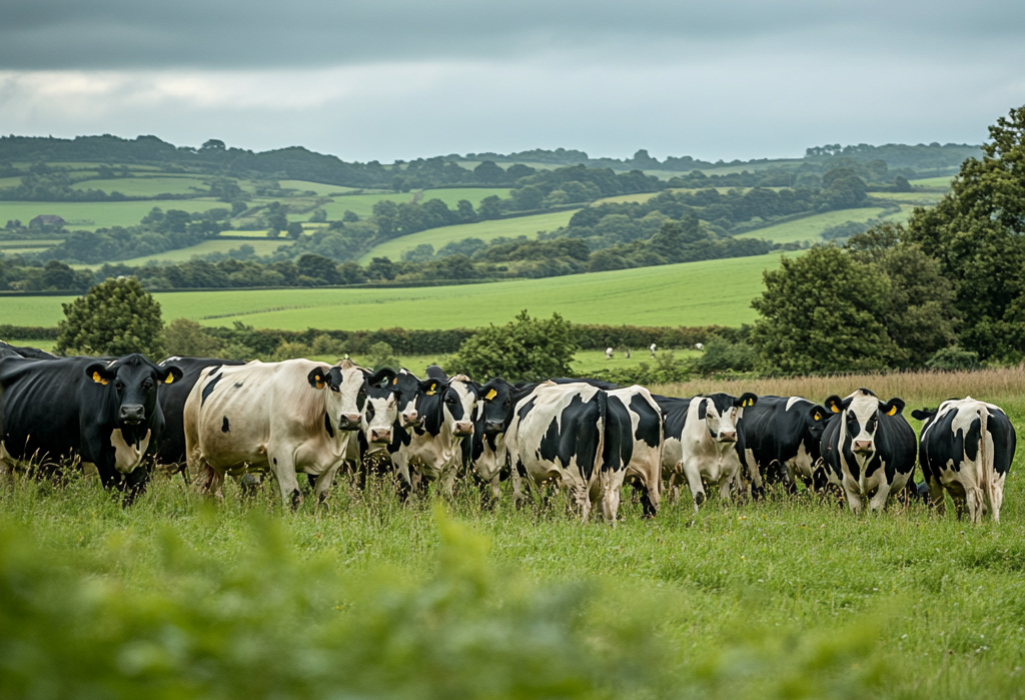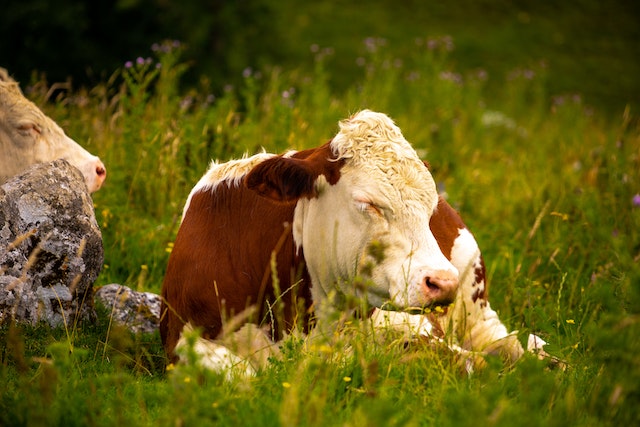Every dairy farmer aims to maximise herd productivity while maintaining the highest milk quality standards. Farmers employ various strategies, from genetic selection to advanced feeding techniques and optimal herd management practices, to achieve these goals. Below are three possible directions for further growth and development of the industry.
1. The average milk yield per cow in Europe has not yet reached its peak
In 2022, the EU’s average annual milk yield hit 7,653 kg per dairy cow, showing continued growth. Denmark and Estonia led with the highest national averages at 10,187 kg and 10,128 kg per cow, respectively. At the other end of the spectrum, Bulgaria (3,621 kg per cow) and Romania (3,367 kg per cow) recorded the lowest yields.
Among major milk-producing European states, the Netherlands and Germany exceeded the EU average, while France, Poland, and Italy fell slightly short. On a global scale, the US maintains its position as the highest yielder, thanks to large-scale industrialisation of milk production, ongoing technological advancements, and meticulously monitored herd genetics. Maximum milk production per cow has recently reached 10,200 litres per year in the US.
2. Genetics is the key to improvements in cow milk production
Impressive results can be achieved by strategic selection and enhancement of the cow breed. Milk production traits may vary within the breed, although not as much as between different breeds. The U.S. dairy industry, in particular, quickly embraced genomic evaluations as the cornerstone for selecting service sires, starting with Holsteins and Jersey cows
Holsteins are the world’s highest milk-producing dairy breed, yielding an average of 10,000 to 12,000 liters per lactation. This exceptional productivity has made them the most prevalent dairy cows in numerous countries. Holstein cows dominate dairy farms not only in Europe and the USA but also in Asian countries like China. The breed’s adaptability and versatility contribute to its widespread use and suggest potential for further improvement.
3. Milk yield is improved by better management practices
Milking cows three times a day can boost average milk production per cow per day by 10–20% compared to twice-daily milking. This increase can be substantial for farms aiming to maximise output. However, when milk prices are low, there’s no financial advantage to milking cows thrice daily instead of twice. Besides, frequent milking requires careful management to avoid teat damage and over-milking.
What happens if you don’t milk a cow three times a day? The yield will predictably decrease, but so will the operational costs. A Michigan State University study suggests that better resource allocation can mitigate negative impacts when there’s insufficient labor for thrice-daily milking. Alternatively, if manageable, farms could milk low-producing, late-lactation cows twice daily while milking all others thrice daily.
In conclusion
The dairy industry is undergoing rapid evolution, propelled by technological advancements, shifting consumer preferences, and growing sustainability concerns. Emerging trends include robotics and automation in milking processes, virtual fences designed to reduce cattle stress, and the application of big data and predictive analytics to enhance farm operations. While these cutting-edge technologies in dairy production merit further exploration, it’s important to note that they aren’t universally accessible to farmers worldwide. Nonetheless, milk production can still be optimised through improved management practices and responsible approaches, regardless of technological adoption.
FAQ & Summary
What is average milk production per cow per day?
An average dairy cow produces 28 litres daily for 10 months. High-yielding cows can reach 60 litres per day, totalling up to 12,000 litres per lactation.
What is maximum milk production per cow?
The US maintains the highest global yield, with maximum production reaching 10,200 litres per cow annually.
What is the best cow breed for milk production?
Holstein cows are the world’s highest-producing dairy breed, yielding 10,000 to 12,000 litres per lactation.
Strategies for improving cow milk production
- Genetic selection and enhancement of cow breeds play a crucial role in improving milk production
- Milking cows three times a day can increase average daily milk production by 10-20%
- Farms can optimise production by selectively milking high-producing cows three times daily and others twice daily
Sources
https://ec.europa.eu/eurostat/statistics-explained/index.php/Milk_and_milk_product_statistics
https://ahdb.org.uk/news/uk-milk-productivity-the-global-context
https://www.canr.msu.edu/news/is-milking-two-or-three-times-more-profitable-during-low-milk-prices
https://www.fwi.co.uk/livestock/dairy/what-to-consider-when-switching-to-three-times-a-day-milking


